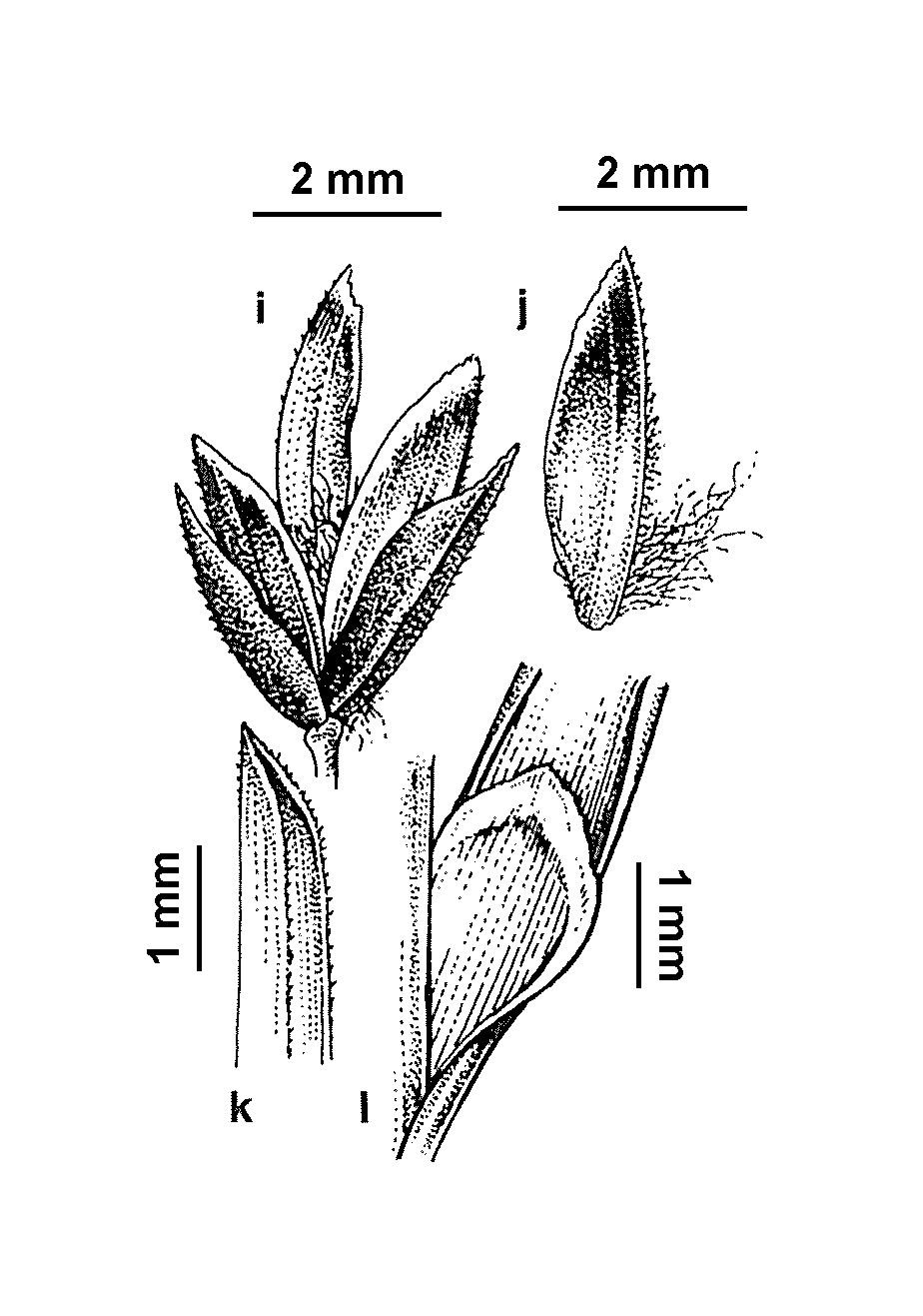Poa pratensis
L. Kentucky Blue-grassVariable rhizomatous perennial, culms erect, to 90 cm high. Leaves glabrous, sometimes slightly glaucous; blade flat or folded, smooth or somewhat scabrous, to 30 cm long and 4 mm wide, abruptly tapered and boat-shaped at apex; ligule obtuse, 1–3 mm long. Inflorescence an approximately ovoid panicle, contracted or open to 20 cm long and 12 cm wide. Spikelets 2–5-flowered, 3–6 mm long, plumpish; lower glume 1–3-nerved, 1.5–3 mm long; upper glume 3–5-nerved, 2–4 mm long, both glumes scabrous along keel; lemma 5-nerved, 2.8–3.5 mm long, densely hairy on the keel and margins with fine hairs increasing in length toward the base; web well-developed, of fine wrinkled hairs. Flowers mainly Oct.–Dec.
MuM, Wim, GleP, Brid, VVP, VRiv, MuF, GipP, OtP, WaP, Gold, CVU, GGr, DunT, NIS, EGL, EGU, WPro, HSF, HNF, Strz, MonT, HFE, VAlp. Naturalised in all States except Qld. Occurs naturally throughout Europe and temperate Asian countries, widely introduced through cooler temperate countries principally as a lawn-grass. Most Victorian occurrences are near settlements (gardens, roadsides, pasture, wasteland etc.), but also quite common in the alps where probably introduced by grazing cattle.
Poa pratensis in Europe is regarded as part of a complex of very similar species. It is possible that more elements of the complex are present in Victoria, but without assessment of the range of Victorian material by one familiar with the European species, a broad circumscription of the species is adopted here.
Walsh, N.G. (1994). Poaceae. In: Walsh, N.G.; Entwisle, T.J., Flora of Victoria Vol. 2, Ferns and Allied Plants, Conifers and Monocotyledons, pp. 356–627. Inkata Press, Melbourne.
 Spinning
Spinning




